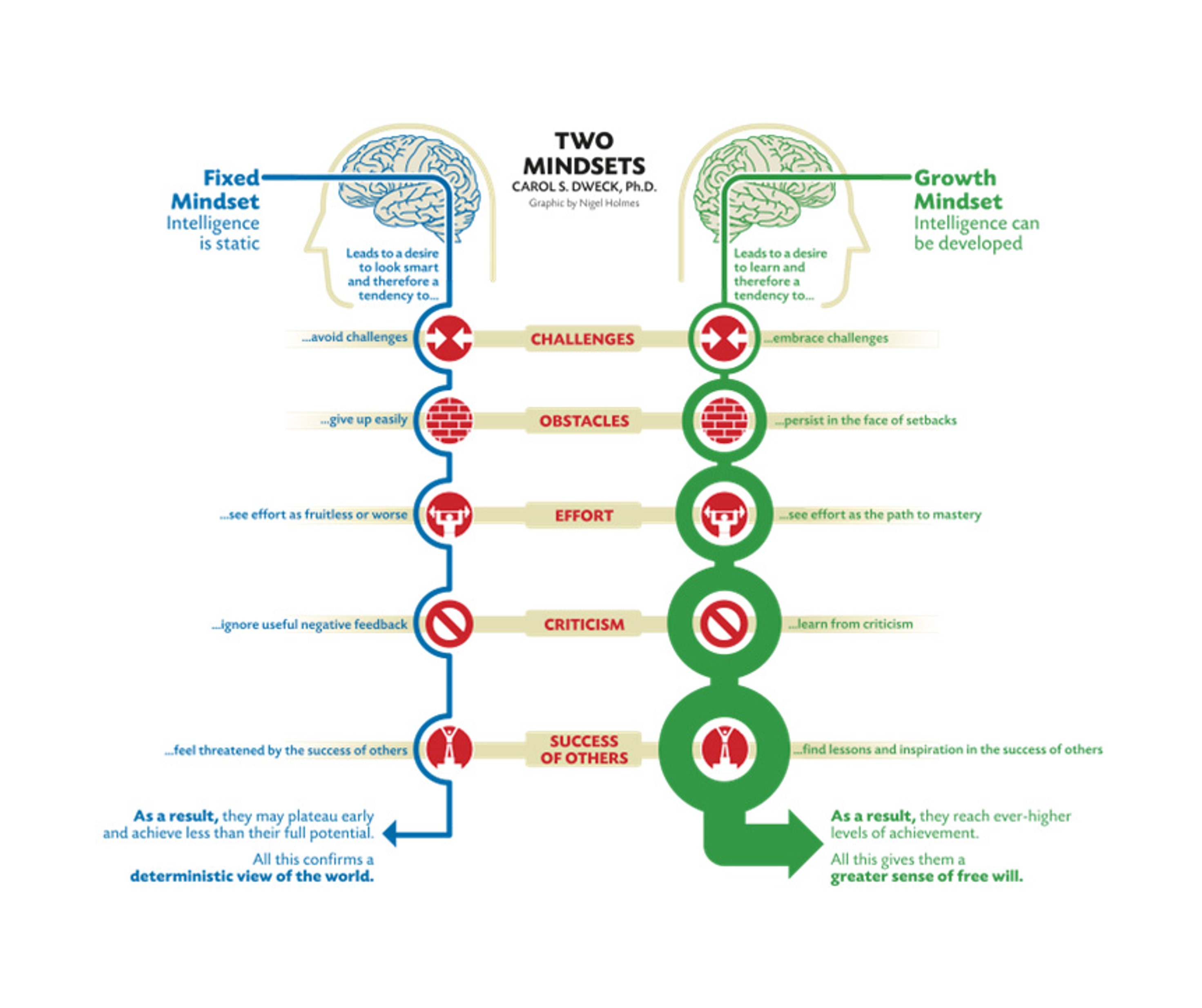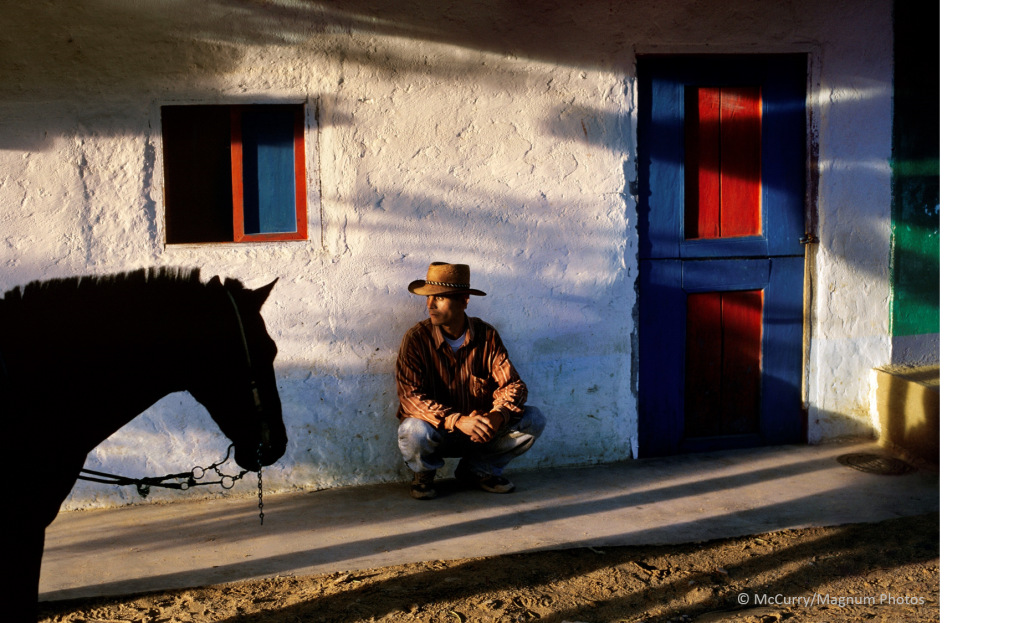Do you exhibit a fixed mindset or a growth mindset?
This graphic is from Stanford psychologist Carol Dweck’s book Mindset: The New Psychology of Success. In it, she argues that “belief systems about our own abilities and potential fuel our behaviour and predict our success”. Although not written about development and poverty, Dweck’s book outlines two distinct mindsets that reflect those we uncovered while developing finance solutions in El Naranjo, Nicaragua. These are the fixed mindset and the growth mindset.

El Naranjo is a community largely made up of subsistence farmers, which is often the case in rural developing areas. Here we found that those whom we classified as poor or low-income exhibited a fixed mindset, and those whom we classified as rich or high income (relative to other members of the community) exhibited a growth mindset. This insight is important because it highlights a correlation between mindset and poverty.
“Mindset” is defined as “an established set of attitudes held by someone”. A fixed mindset is a belief that one’s ability, potential, or social position are static, and that any barriers to growth are insurmountable. It manifests in a present focus and an inability to plan for the future. A growth mindset is a belief that these things are changeable through innovating and diversifying to overcome obstacles to growth. It manifests in an ability for long-term thinking.
The correlation between mindset and poverty is also significant because it reveals a non-physical obstacle to growth.
A physical obstacle is easier to see, and maybe even easier to address. It can be a lack of education; low access to information, resources, services or markets; a shortage of employment opportunities or income sources.
A non-physical obstacle is an internal element that is more difficult to observe. Ican be discovered through the design thinking approach—immersion in the world and context of the person we are designing for—the user. In this case the obstacle is the fixed mindset and the user is the individual trapped in the cycle of poverty.
In El Naranjo, those in the low-income group exhibited a deterministic attitude—They identified with their poor status as stagnant. They believed that financial tools such as saving and investment did not apply to them, or could not change their position. They were hesitant to consider new and unfamiliar ideas for sources of income or employment, and averse to taking risk with finances by saving externally or investing for the long term.
Those in the high income group, on the other hand, did not overly identify with their current status. In the face of unstable income and external environmental factors, they had found new ways to supplement their income, had taken financial risks by investing in new machinery or exploring different skill sets over the long term, and taken risks without any guarantee of a positive outcome.
What accounts for this correlation between poverty and mindset?
It is not necessarily the case that the poor are in their position due to lack of ability. In fact, we found that those in the low-income group had illustrated the capacity for long-term growth, having saved in order to buy property and build their own homes.
The next step is to determine if there is a causal relationship—is poverty the result of a fixed mindset, or does poverty lead to a fixed mindset?
A recent report shows a causal relationship between poverty and cognitive capacity. In a study of sugarcane farmers in Tamil Nadu, India, researchers found that cognitive performance (on spacial and numeric tasks) diminished during planting season (when poor) and increased after harvest (when “rich”). They argue that the reason for this is “poverty-related concerns consume mental resources, leaving less for other tasks”. Preoccupied managing unstable income and struggling to cover basic daily expenses, what cognitive space is left to think of the future or develop new ideas beyond pressing current needs?
Another study similarly demonstrates a direct relationship between poverty and future discount rates. A future discount rate is the decrease in value a person places on a future option relative to a present option. The study used a test which simulated an experience of wealth or poverty by assigning subjects financial gains or losses. Those who experienced losses subsequently showed greater aversion to risk and higher future discount rates . In the context of poverty, the option to save money for future use became less desirable than spending the money today. This is also an example of (perceived) opportunity cost, where the cost of one option is the value of the alternative option. The study shows that someone in poverty would choose the present spending option, as they place a lower value on the alternative future spending option. (In reality, the value of the future option, saving money, may be much higher than the present option of spending it on consumption). This study illustrates that a person in poverty exhibits a lower capacity for long-term thinking than the rich, consistent with the fixed mindset.
This also illustrates the concept of scarcity; that resources are limited: When one option is chosen (spend money now), another option is given up (spend money later). In their book by the same name, Harvard behavioural economist Sendhil Mullainathan and Princeton psychologist Eldar Shafir argue the same—Scarcity (in our case poverty, the scarcity of resources relative to needs) reduces a person’s mental “bandwidth”, making them “less insightful, less forward-thinking, and less controlled”.
Poverty produces a mindset that leads to behaviours that in turn reinforce poverty—by consuming mental resources on present needs and reducing the capacity for forward and innovative thinking. This illustrates a fundamental truth common to all of us regardless of geographical location or level of development: that all things being equal our circumstances influence our beliefs about ourselves, these in turn drive our thoughts and actions, and ultimately predict our success.
With this in mind, a solution out of the mental barriers of poverty is not simply the option to take out a loan, or to build a microfinance institution, but must also be accompanied by education, support and other tools that have the potential to reduce the actual and perceived level of poverty, like the chicken program we developed as a solution for the farmers in El Naranjo. You can learn more about it here.
A problem like this can only be solved by immersing ourselves in the context of the person we are designing for, in this instance the context of poverty. When we identify core beliefs, needs and desires, we can design from the user’s perspective and come closer to solutions to the complex challenges of our time.
Stamatia Zafiriou

